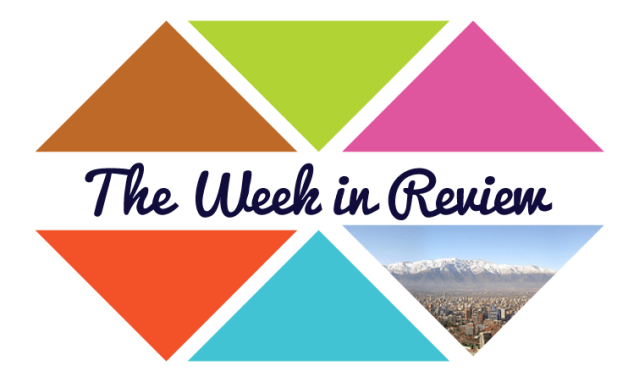
¡Hola a todos! Here are this week’s resources. They are diverse and, like my mom says, “a todo dar.”
– To start off, check out the Q&A and Cover Reveal with Author-Illustrator Tony Piedra shared by Latinxs in Kid Lit. The cover reveal is for the book The Greatest Adventure, which is going to be released September 11, 2018.
— Check out why it’s time to diversify and decolonise our schools’ reading lists. It was expressed in the post that “Indigenous and students of colour deserve to have the same privilege in education that white students have always had – the opportunity to examine and imagine the full extent of their humanity in literature.”
– With the latest caravan of Central Americans fleeing their countries due to violence and political reasons, you might want to view Hip Latina’s post on how to talk to kids about violence, crime and war. According to the web, “These tips and conversation starters can help you talk to kids of different ages about the toughest topics.”
— Also from Hip Latina, you can view Zoe Saldana’s perspective on how being Afro-Latina hindered her from landing lead roles. This is a great article when talking about identity and what it means to be Afro-Latina in the U.S. and Latin America.
— La bloga shared the poems Liz González presented to the Autry audience and who will be published in July by Los Nietos Press.
– Here are some tips for reading poetry aloud to children, courtesy of Lee and Low Books.
— De Colores recommends Arriba, Abajo y Alrededor by Katherine Ayres and Nuestro Huerto: De la semilla a la cosecha en el huerto del colegio by George Ancona. According to the reviewer, Arriba, Abajo y Alrededor is “perfect for bilingual preschool classrooms” while Nuestro Huerto’s “gorgeous full-color photographs are laid out with lots of white space to accommodate his clear, accessible text and student art rendered in marker or crayon.”
— You can view the interview with Saraciea Fennell– an organizer of the Bronx Book Festival that is going to occur May 18-19. Fennell talks about the making of the festival and the reason why it arose.
– Here are vignettes of women who weave words and who stood their ground in “Literary Witches” and “She Persisted” by Gathering Books.
– Deverian de ver como la fundación la Fuente celebra el día del libro con el festival Somos Lectores. Segun, “la Fuente han dado vida al primer Festival Somos Lectores, con actividades literarias, encuentros con autores, una campaña de donación de libros, descuentos y sorteos. Revisa nuestra programación y participa en esta fiesta de la lectura.”
— Finally, here is why the future is bilingual from TexasMonthly. Former state senator Leticia Van de Putte and Representative Diego Bernal “met at Jefferson High to talk about how to improve public education in San Antonio and the challenges of advocating for the city’s students at a state level.” When discussing how to improve education Representative Bernal emphasized that “the conversation we need to have is that dual language is the way to go. But that’s not the statewide attitude at all.”
Abrazos,
Alin Badillo
Image: Santiago, Chile 2005. Reprinted from Flickr user Luxbao under CC©.





